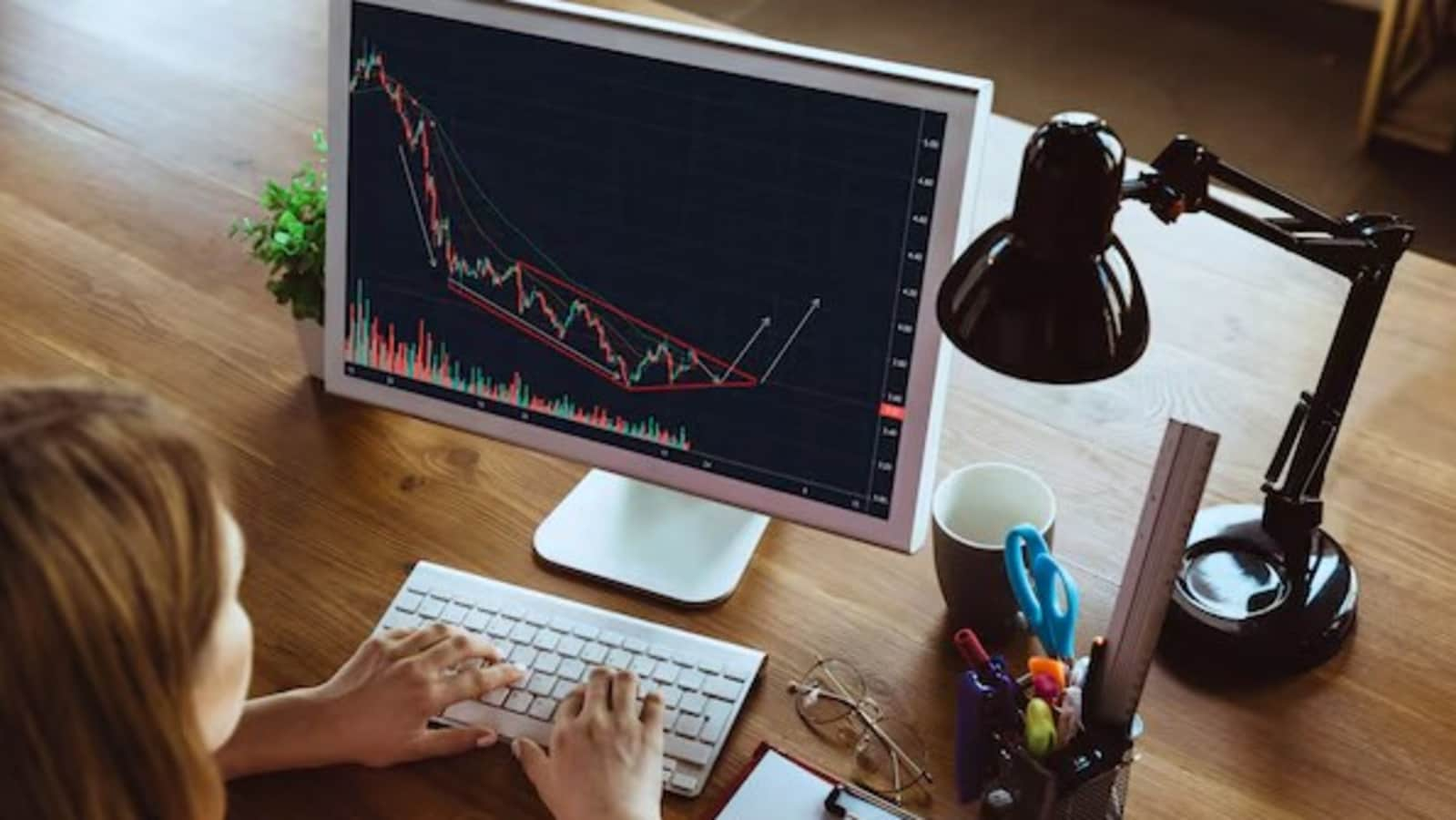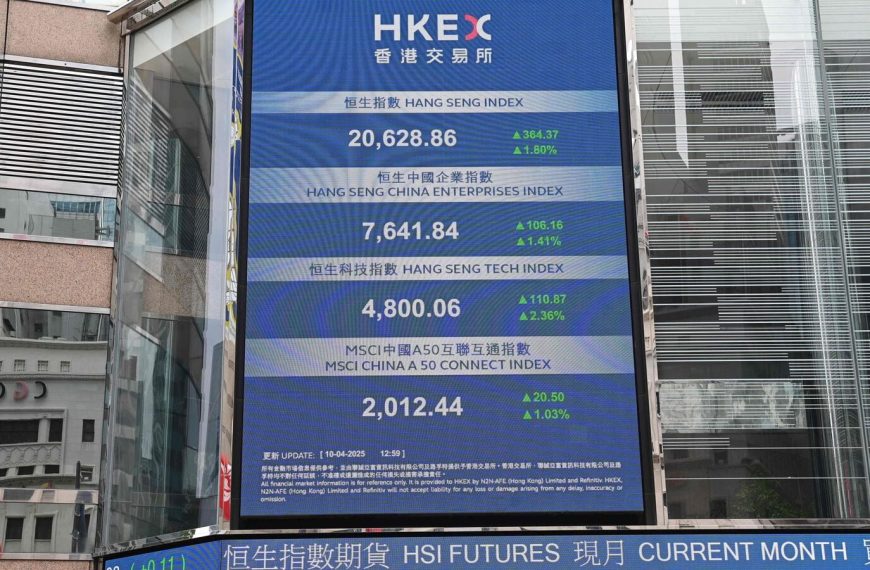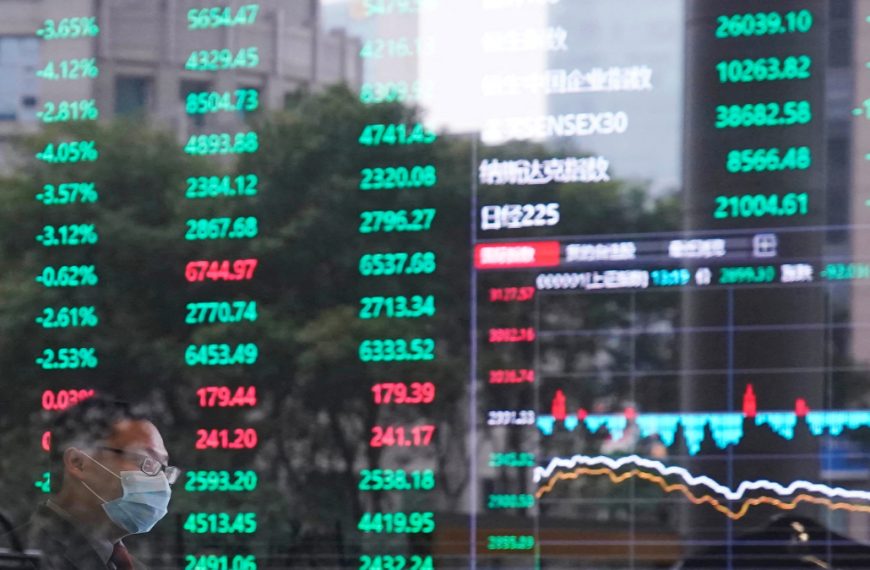Wall Street is experiencing significant turmoil for the second consecutive day, largely fueled by President Donald Trump’s recent tariff announcements. As fears of a trade war escalate, all three major stock indexes have taken a hit, with the tech-heavy Nasdaq Composite teetering on the brink of a bear market. Investors are reacting to the staggering economic implications of these tariffs, leading to dramatic declines across the board.
Market Turmoil and Major Index Drops
The stock market is facing one of its worst downturns since the early days of the COVID-19 pandemic. By mid-afternoon trading, the main indexes had all dropped over 4.5%, signaling a troubling trend:
- Dow Jones Industrial Average: Down 4.48%, losing 1,812.68 points.
- S&P 500: Down 5.10%, dropping 275.80 points.
- Nasdaq Composite: Down 5.04%, a decrease of 833.35 points.
Since President Trump raised tariffs to their highest levels in over a century on Wednesday, the S&P 500 alone has seen a staggering loss of over $4 trillion in market value. This decline surpasses the previous record of $3.3 trillion lost in March 2020.
Global Reactions and Economic Concerns
As U.S. trading partners respond to these tariffs, the potential for retaliatory measures is creating further unease among investors. The CBOE Volatility Index, which measures market fear, surged to 42.13 points, the highest since August. In a significant move, China announced plans to impose additional tariffs of 34% on all U.S. goods starting April 10.
This turmoil has drawn comments from financial experts. "We’re currently navigating a chaotic landscape of trade," said Mariam Adams, Managing Director at UBS Wealth Management. "The uncertainty is challenging for markets globally."
Federal Reserve’s Response and Future Outlook
In light of these developments, Federal Reserve Chair Jerome Powell addressed the issue publicly for the first time since Trump’s announcement. He warned that these tariffs could lead to increased inflation and slower economic growth, complicating the Fed’s decision-making process.
Predictions for the Economy
Investment bank JP Morgan has adjusted its outlook, now projecting a 60% chance of a global economic recession by the end of the year, up from a previous estimate of 40%. Despite this grim forecast, traders are still anticipating a more accommodating stance from the Fed, with predictions of cumulative rate cuts of 100 basis points by the end of 2025.
Sector Performance and Stock Reactions
The bond market witnessed safe-haven buying, which drove the yield on the benchmark 10-year Treasury notes to a six-month low, slightly recovering to 3.98% during trading. This environment has placed further pressure on U.S. bank stocks, leading the S&P Banks Index to plunge 6.6%.
All 11 sectors of the S&P 500 are currently facing declines of more than 2.8%, with the energy sector leading the way downwards at 7.9%, following a 7.2% drop in U.S. crude prices. Companies heavily reliant on China, including JD.com, Alibaba, and Baidu, saw their shares tumble by over 9%. Tech giants like Apple also felt the pinch, dropping 6.4% as concerns about tariffs intensified.
The semiconductor sector is particularly vulnerable, with chipmakers suffering a 7.3% decline, compounding an earlier 9.9% drop the day before. This vulnerability stems from their reliance on both U.S. design and Chinese manufacturing, creating a dual threat from tariffs.
As the situation evolves, investors continue to monitor developments closely, bracing for further volatility in the markets.











